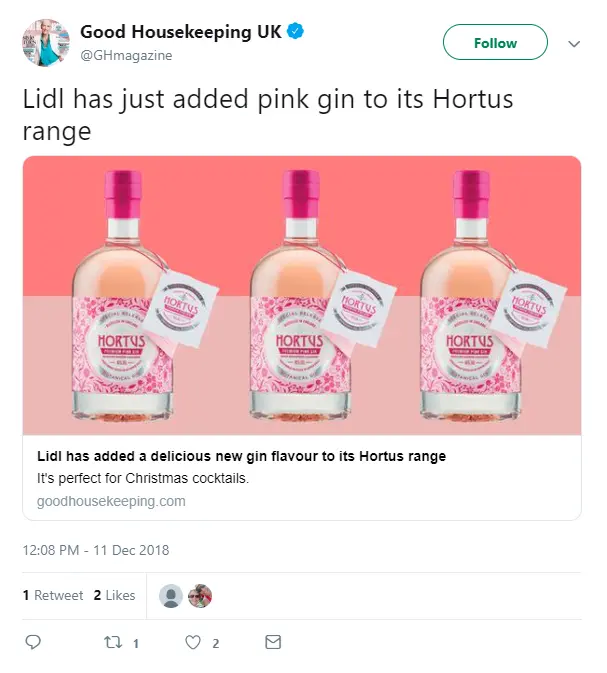
Digital marketing can be particularly valuable to businesses who may once have been shunned with a low-quality brand image and want to work to change people’s perceptions of them and to persuade the world that they offer good quality, trustworthy goods and services.
Lidl, in particular, is a perfect example of a brand using digital marketing to build the trust of its customers. Having once been viewed as a second-rate supermarket, they have since persuaded people that ‘budget’ pricing is not an indicator of quality.
It’s clear they have a relatively large marketing budget that has played a major part in their strategy to change perceptions, and it seems as though they’re getting a good return on investment judging by the constant queues in their stores! Let’s look at different aspects of their digital marketing to investigate what they’re doing, and exactly why it’s working for them…
When it comes to the packaging of Lidl’s home brand products, it’s clear they’re keeping an eye on the visual style of current trends and ensuring the products they offer mimic the activity of upmarket brands. With home brand products such as their familiar-looking crisp multipacks, they’ve used the same colours, fronts, and imagery as the packaging on established supermarket products—the same ones they’ve mimicked the flavour and style of. Thus, the consumer feels a sense of familiarity when they see these products and are more likely to trust them.
When you compare the price of Lidl’s home brand crisps over brands like Walkers, the price tag of the home brand product will obviously be more attractive to customers. As a result, this will lead to more purchases from consumers who want to go for a product that looks to have a similar quality as well-known brands, all for a fraction of the price.
The font and imagery displayed on the labels of Lidl’s alcohol range are highly reflective of the style of packaging for ‘artisan’ products, and you could easily be fooled into thinking the £15.99 bottle of Lidl Hortis Dry Gin comes from a specialist store if you were asked to judge it on its branding alone.
In this case, it’s not a matter of style over substance—the substance is pretty good too! This ensures that people who are drawn in by the attractive branding are likely to keep coming back for more good quality products at ‘budget’ prices.
As well as keeping its branding style up to date, Lidl makes sure to stay on top of social media trends too. They publish highly engaging posts on Facebook, with a recent example asking their audience to use the react options to vote for their favourite burger sauce.
They also use playful puns on the majority of their posts, presenting themselves as approachable and ‘down to earth’. This appeals to their target customers who won’t be shoppers that shop exclusively at upmarketing stores such as Waitrose, but will be people who still want to see quality.
This sort of content encourages high engagement rates, as the posts are fun and people are specifically given a call to action on how to respond. The higher the engagement rates on their content, the more trustworthy and authoritative the brand comes across. This means that more people will become aware of the brand and specific products on offer, which helps to build their customer base.
The best way to make a marketing strategy work is to ensure all the different marketing channels and assets are sending out a consistent message. This is why multi-platform campaigns work so well: it presents the opportunity to create a main focus aspect of the campaign, (such as a television advert with a central message) that can then be channelled through social media and other aspects of digital marketing. Using a hashtag to tie all the different elements together is the best approach to this kind of campaign.
Lidl’s recent #LidlSurprises campaign is an excellent example of this, as the series of television adverts presents that all-important brand message that Lidl’s products are reliable and trustworthy. The TV ads introduce an individual who expresses their doubt over the authenticity of Lidl products online, and is then approached by the supermarket retailer who shows them how and where products such as their fresh fish range are sourced from to prove the product is as fresh as the label claims it to be, despite being less costly than other retailers
The advert then encourages the use of the hashtag #LidlSurprises. From doing a quick search on social media it's clear to see that this is being used by their customers along with images of their products. Thus, they now have a bank of user generated content to validate the authenticity and reliability of their products simply by giving their audience a call to action with a well thought through campaign.
So you can see that over the years, the marketing team at Lidl have reviewed and improved all the separate aspects of its digital marketing to ensure they have the resources available to compete with other supermarket retailers. They’ve been working constantly to change perceptions, and as a result they are continuing to boost their ever-growing customer base.
If you’re a brand looking to change customer perceptions of your products and services, check out the rest of our blog posts and see how we can help!
You'll receive an email update every 2 weeks with insight and advice to support you in your digital marketing journey. We treat your email address with care, and you can unsubscribe with just a click.